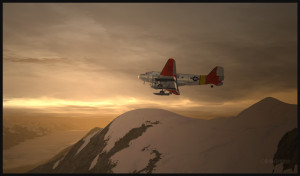FSGRW
FSGRW is a weather generator and it uses downloaded data from the internet to simulate actual real weather all around the world (24,000 + airports).
The program simulates very well what is going on in the atmosphere up to FL520, including the depiction of hurricanes and tropical cyclones.
FSGRW does not come with its own cloud texture packages. Like for ASN(Active Sky Next) or OpusFSI, you must add a texture package from a third party (like REX for example). FSGRW will then use those beautiful textures to represent the downloaded weather from the internet, instead of the old cloud files that were created years ago by Microsoft.
FSGRW was not created to give you access to all kind of fancy options like automatic connections to the weather radar of big airliners. It is a simple but very efficient program that aims at representing the weather accurately.
FSGRW includes some well-known local weather effects.

FSGRW is compatible with FS2004, FSX, ESP, P3D, Steam and X-Plane.
FSGRW gives you the possibility to use the actual weather present at one airport and transfer it to another airport. You have access to historic weather through a file-mode option. You may also choose to fly with dynamic or static weather. The weather updates are made every six minutes now that version 027 has been issued.
You can create your own flight plan and weather sequence.
FSGRW can be used through a network.
I own FSGRW and use it in combination with REX texture packages. I am very satisfied of the result. But I don’t doubt that ASN, OpusFSI or REX weather engines can provide excellent results as well. The only thing to remember is that you have to buy a weather engine AND cloud texture packages in order to improve the virtual weather’s visual aspect.
Here is the link: PILOT’S
For more weather engines, click on the following link: Other weather engines
For more articles on flight simulation on my web site, click on the following link : Flight simulation